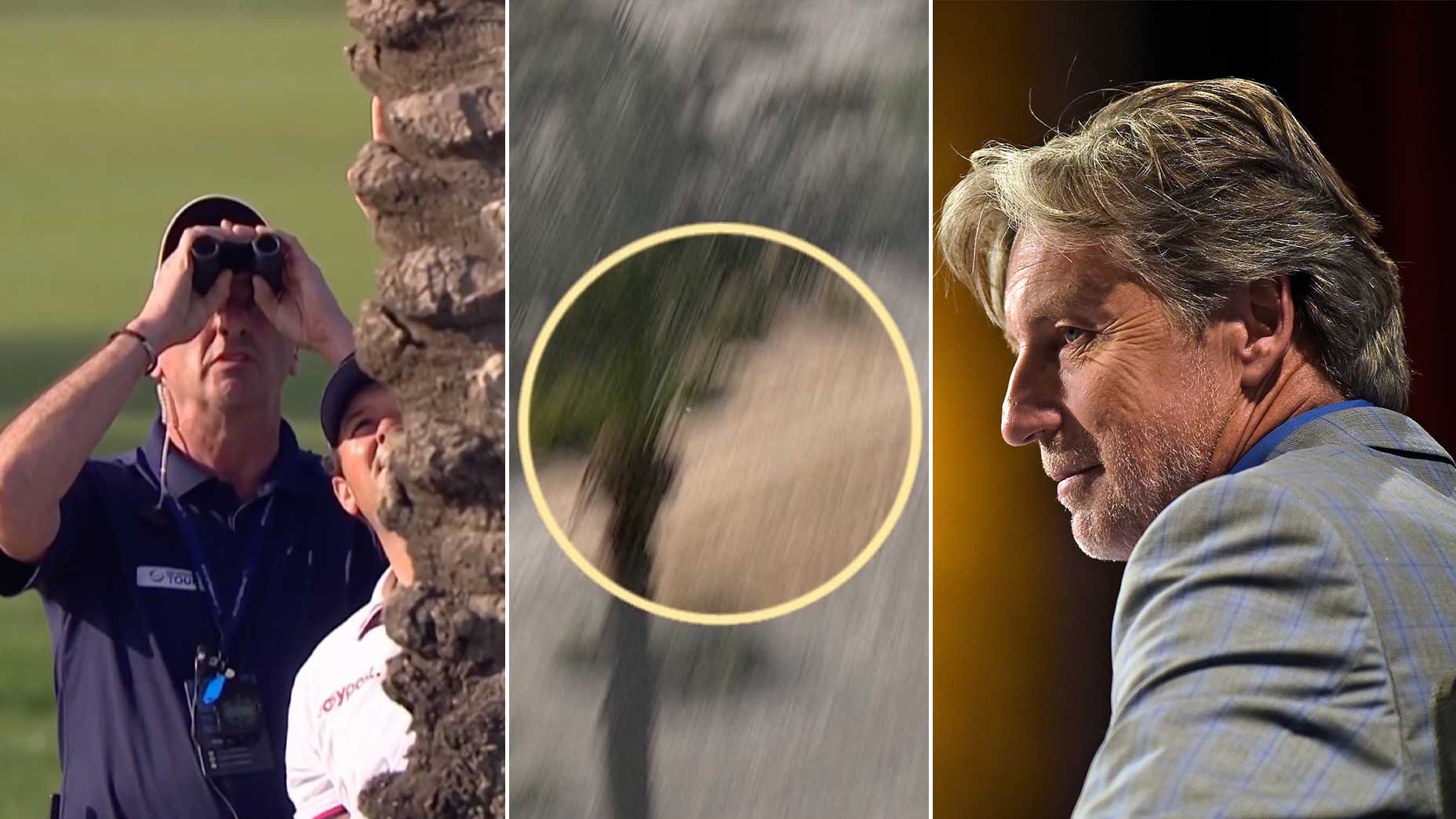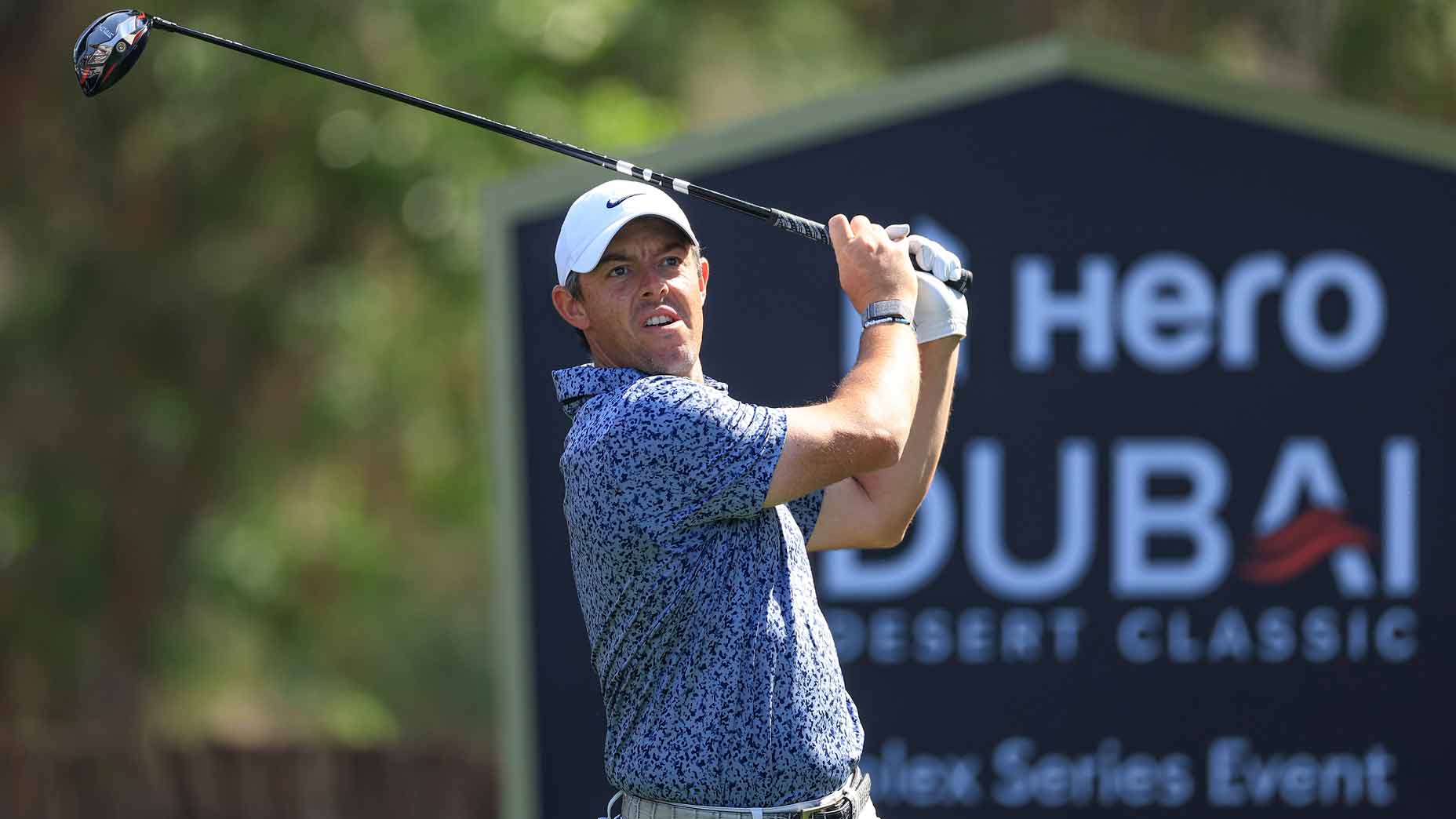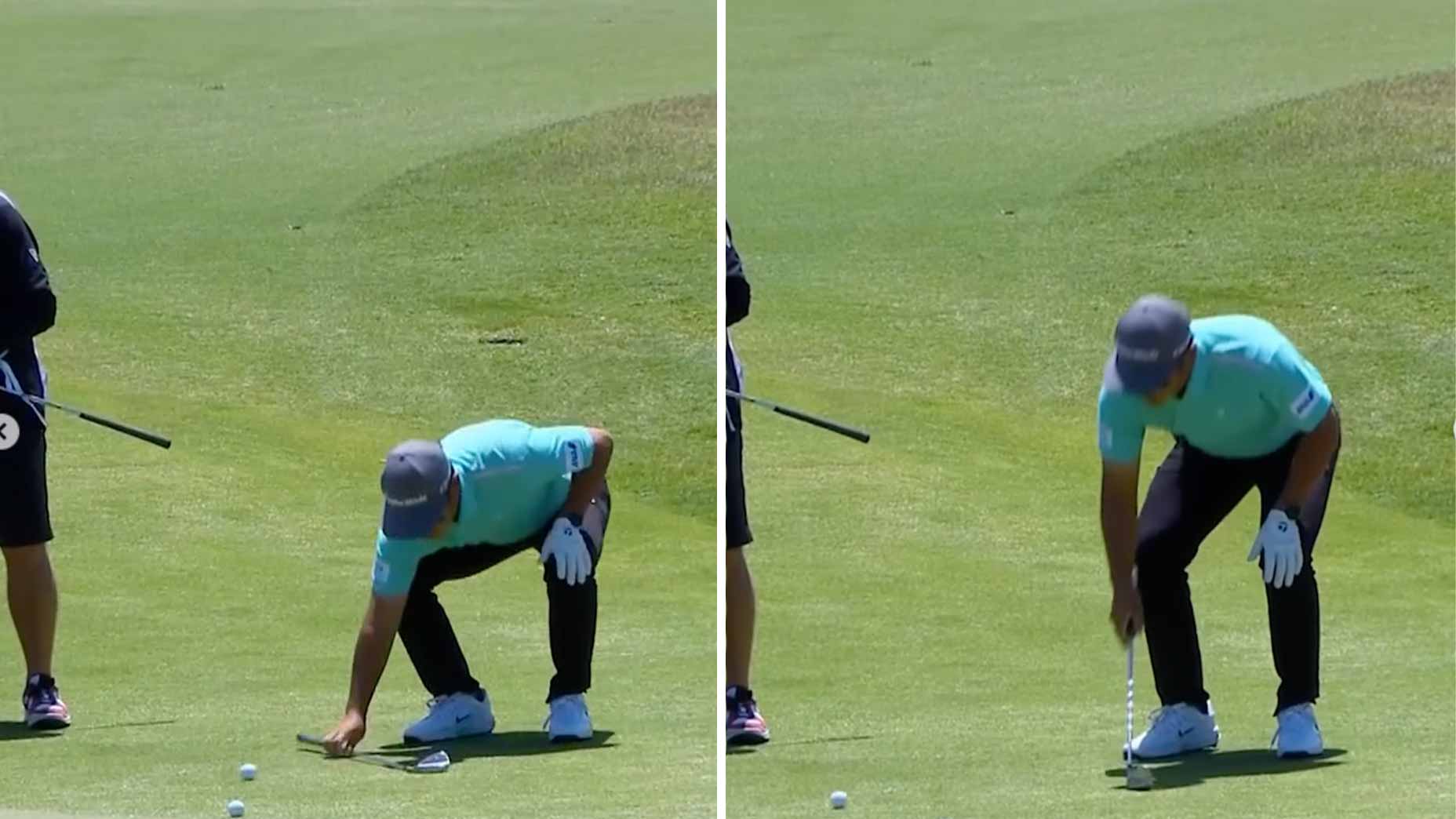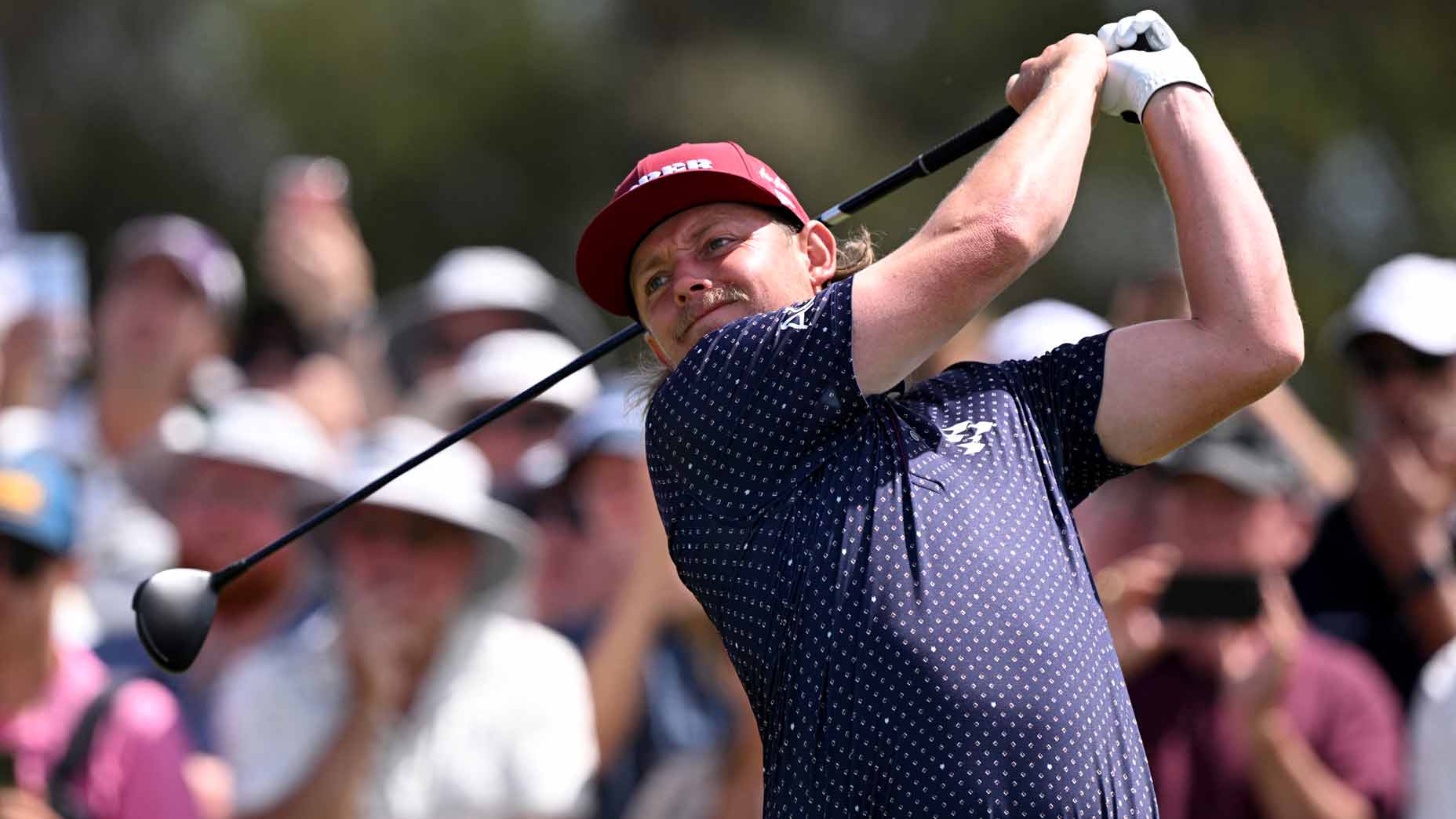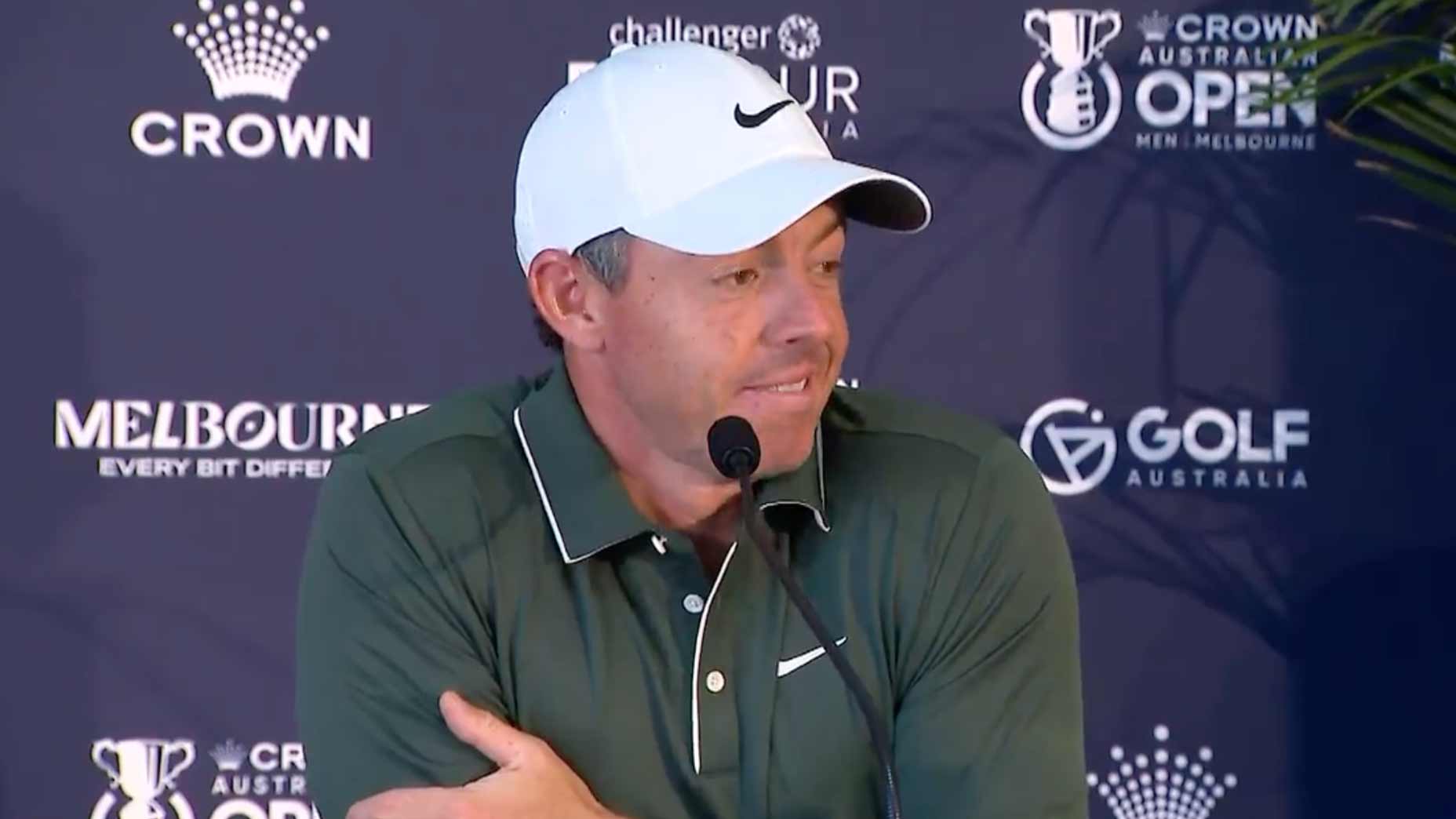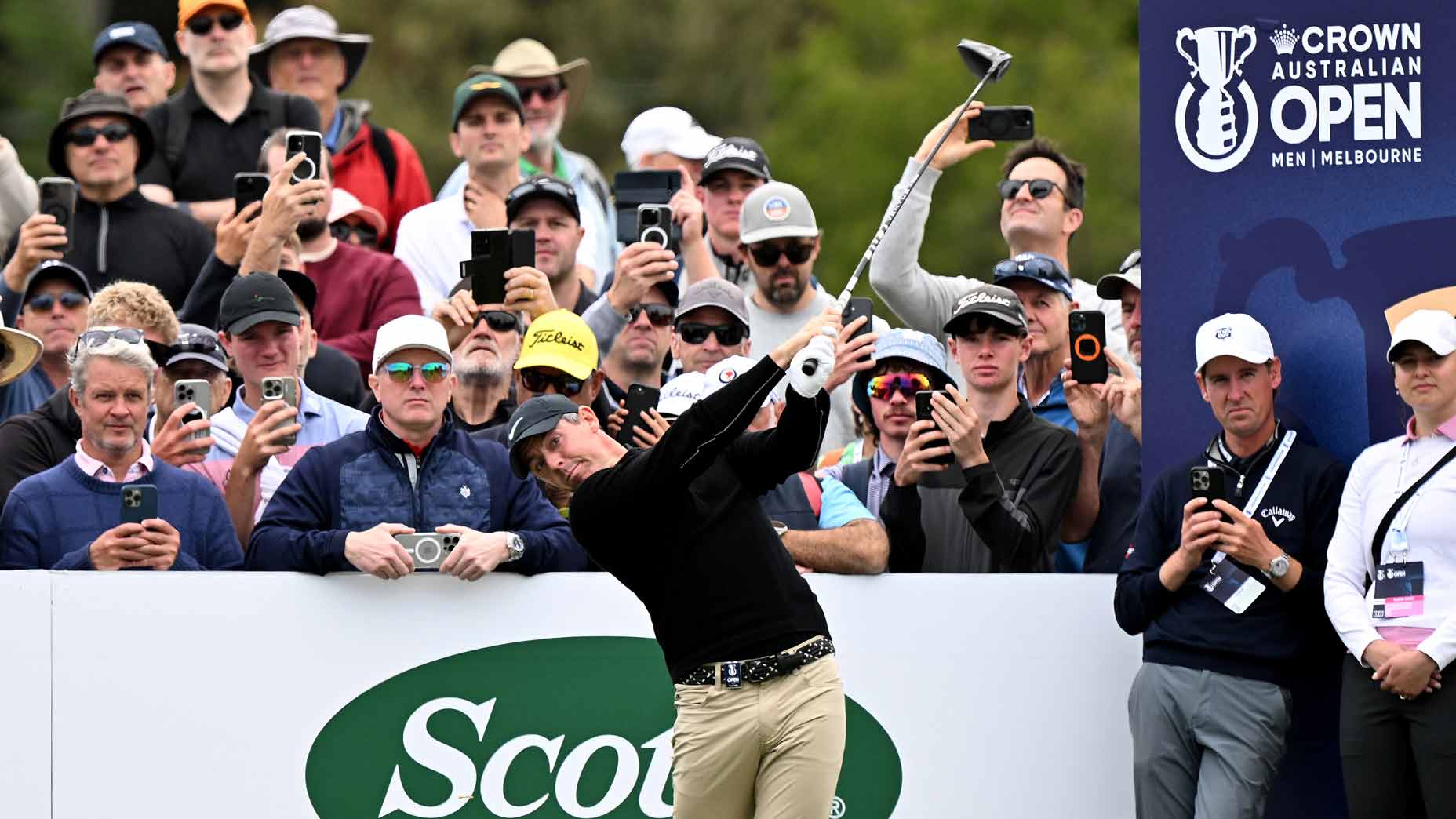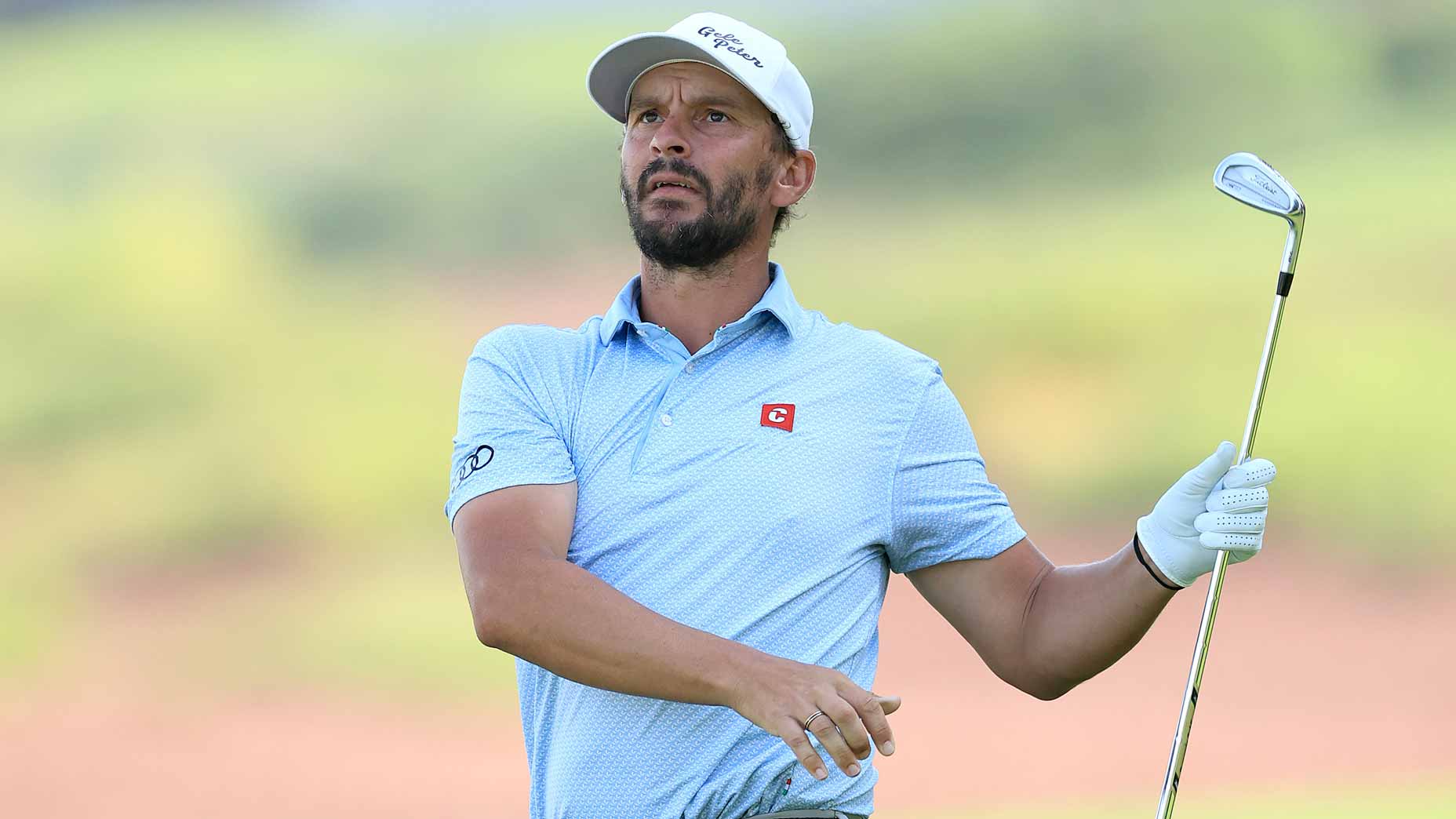In case you missed it, Patrick Reed was is in the middle of another rules controversy at the Hero Dubai Desert Classic on Sunday.
After some tension with Rory McIlroy made headlines earlier in the week at Emirates Golf Club, Reed again found himself under the microscope after hitting a tee shot into a tree during the third round of the event.
Initial video replay seemed to show Reed’s tee ball on the 17th hole Sunday lodging into the first of a cluster of three palm trees right of the fairway. But Reed and a DP World Tour rules official concluded that, in fact, one of several balls stuck in the third tree closer to the green matched Reed’s description of his ball’s markings. Reed, who used binoculars to aid in his search, said he was “100 percent” confident that he had identified his ball, and the official agreed with Reed’s assessment.
Among the pundits who took a close look at the replay was Golf Channel’s Brandel Chamblee, who tweeted a clip from his analysis, which you can watch here:
If you haven’t seen the video of Patrick Reed’s tee shot at 17, here it is. pic.twitter.com/sgnKcLH4Sf
— Brandel Chamblee (@chambleebrandel) January 30, 2023
“I think it’s worth taking a look at the video and slowing it down exactly so we can better determine the path of the golf ball,” Chamblee said. “We’re able to do that here.”
Chamblee, who Reed tried to sue for defamation last year (a judge dismissed the complaint in November), starts with real-time broadcast footage of Reed’s tee shot on 17, noting the camera operator was able to track the ball most of its flight until it reaches the three trees. The ball disappears with no bounce, and it’s hard to tell where it ended up.
A second viewing slightly slowed down seems to show the ball disappearing right as it passes the first of the palm trees. The clip then cuts to a close-up shot showing several balls lodged in the second tree.
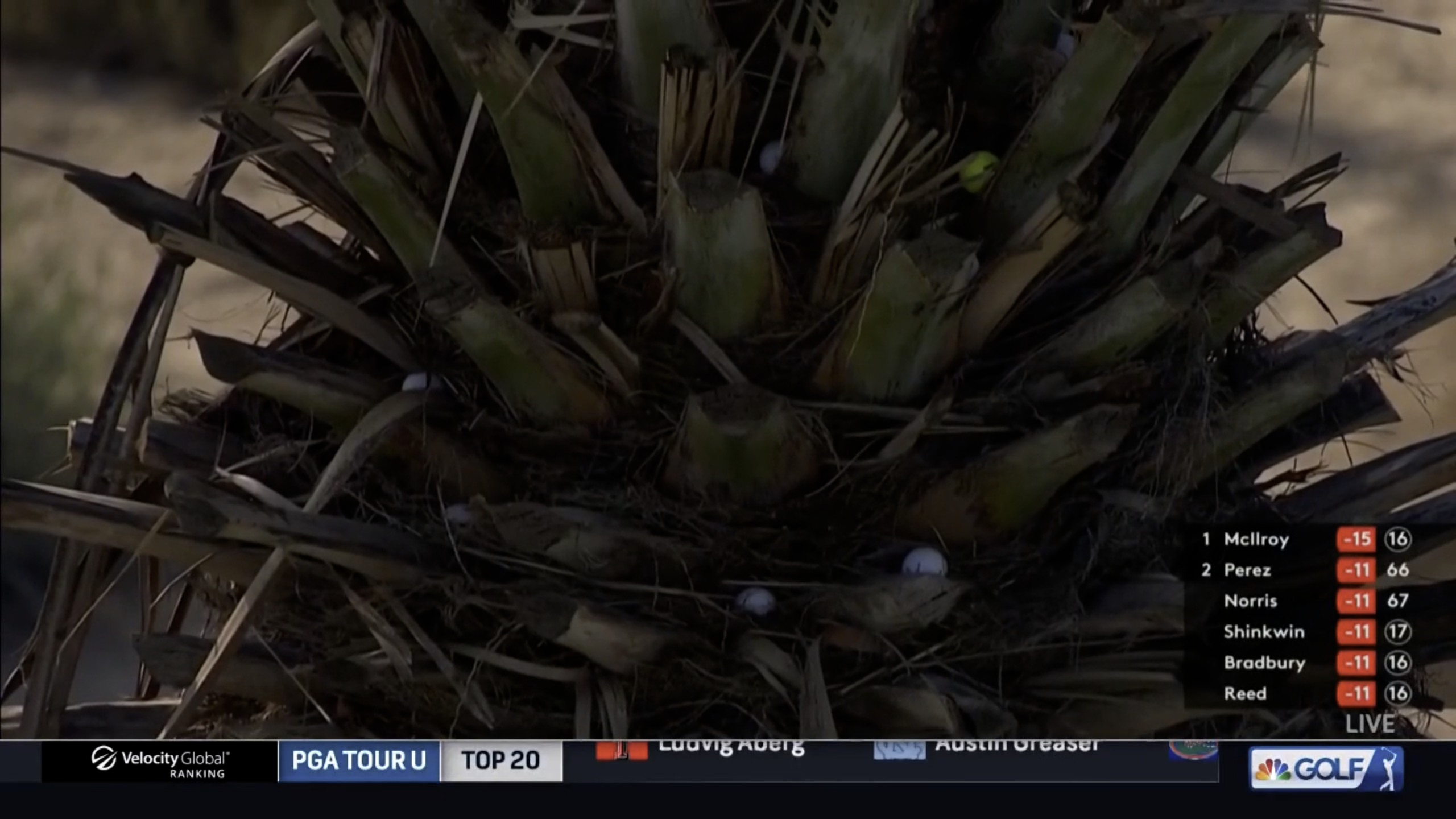
“You see in these palm fronds, there are scores of golf balls in there,” Chamblee said. “And since most professional golfers predominately play Titleist Pro V1s [Reed’s ball model], it’s reasonable to assume, it’s littered with Pro V1s in there.”
The next clip was a frame-by-frame replay with the area of the ball highlighted to almost clearly show it disappearing while striking the first tree.
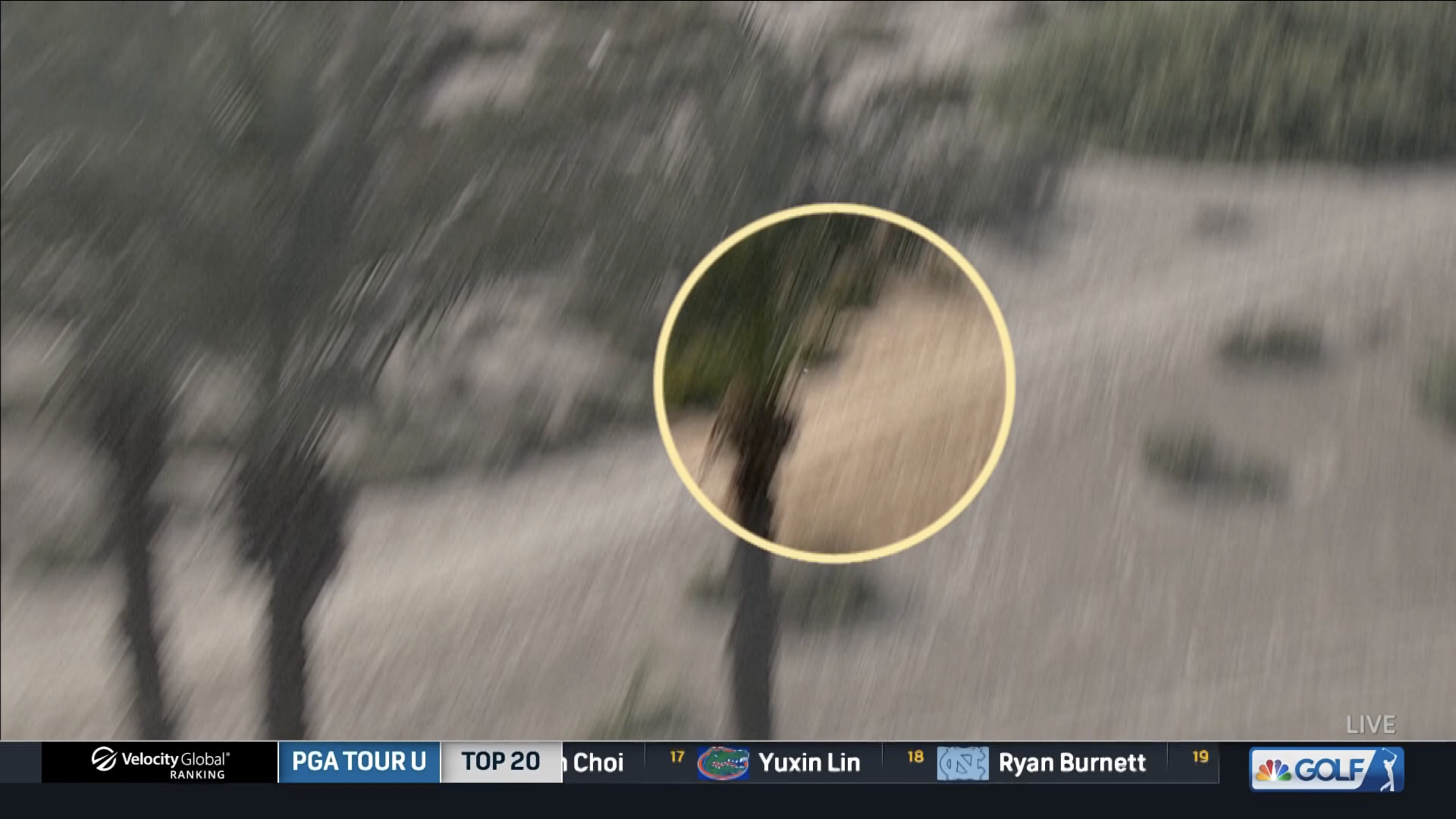
“You can see the first tree right there. The one he said it was in was the third one, the one farthest to the left,” Chamblee said. “It disappears in this first one … For it to be in that third one, it would have to be much, much higher up over there and it would have to be much further over to the left to get into that third tree.”
Chamblee then proposed hypotheticals to explain how Reed’s ball could have still ended up in the third tree. He said that scenario was still unlikely, however, given the ball appeared to strike the first tree on the side facing the tee.
Bizarre Patrick Reed rules situation results in ‘lucky’ dropBy: James Colgan
“It’s likely going to bounce back to the tee or over to the fairway or over into the sand if it bounces, but we didn’t see it bounce,” he said. “Since it was then be going somewhere in the vicinity of the tee, it would then have to reverse directions, change speed, then start going towards the green again.
“Gain altitude, go through the limbs of the first tree to get to that third tree.”
“You know miracles can happen, Brandel?” host Anna Jackson said in response to the scenario.
“It could,” Chamblee replied.
Reed ended up taking an unplayable from beneath the third tree, closest to the green, giving him an unblocked view of the green for his third shot. From there, he made a bogey 5 and finished the third round at 11 under, four shots back of Rory McIlroy.
‘I showed a lot of mental strength’: Rory McIlroy holds off Patrick Reed for thrilling win in DubaiBy: Zephyr Melton
Reed rallied in the final round Monday, shooting 65 and forcing McIlory to drain a mid-range putt to win by one stroke.
Had Reed and the official determined his ball was in the first palm tree, he would have had to play from farther back, as well as have a more difficult angle. If Reed hadn’t been able to identify his ball at all, he would have had to return to the tee and play his third shot from there. McIlroy stood on the tee for much of the time as Reed tried to identify his ball.
“I would have gone back to the tee if I wasn’t 100 percent [certain that it was my ball],” Reed said after the third round.
He downplayed the ruling in a post-round interview with the golf account @TourMiss and said an “arrow” marking on his ball allowed him to identify it.
“I got lucky that we were able to look through the binoculars and you have to make sure it’s your ball,” Reed said. “How I mark my golf balls is I always put an arrow on the end of my line — because the Pro V1 arrow on the end stops before it — so you can see the arrow. And you could definitely see and identify the line with the arrow on the end. The Rules official luckily was there to reconfirm and check to make sure it was mine as well.”
The DP World Tour also issued a statement after the round, saying: “The DP World Tour chief referee joined the player in the area and asked him to identify his distinctive ball markings. Using binoculars, the chief referee was satisfied that a ball with those markings was lodged in the tree.”
